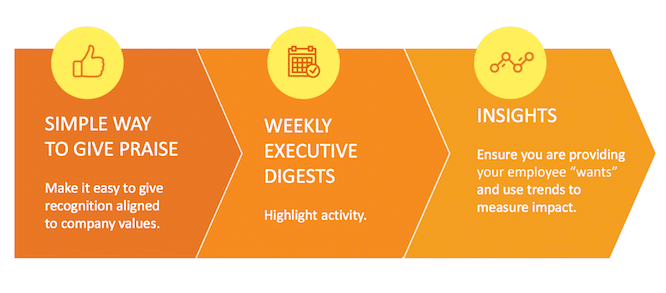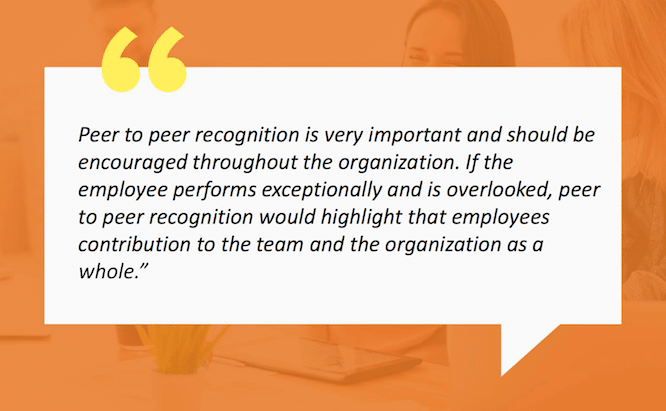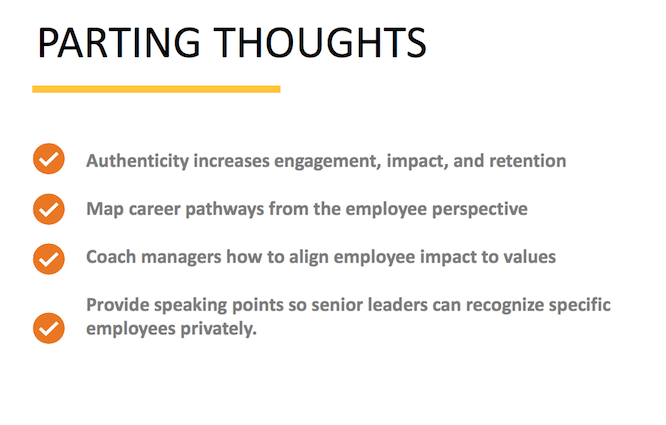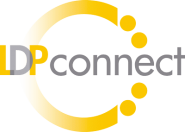Employee Recognition: Rewards Beyond Compensation
Employee Recognition: Rewards Beyond Compensation
Classic motivational theory ties an employee’s satisfaction to financial incentives.
In other words, if a manager is happy with job performance, a bonus or raise are obvious ways to keep the employee happy (or to keep the employee, period).
However, financial incentives aren’t always the best solution.
New motivational approaches hold that constructive feedback and employee recognition are also important parts of employee retention and engagement.
In a recent LDP Connect webinar, Todd Horton, CEO of KangoGift, spoke about how career training programs can leverage these “rewards beyond compensation.” Todd has 20 years of HR experience, including developing compensation and recognition standards. With KangoGift, he helps large organizations enhance various stages of the employee lifecycle through conspenatory and more “out of the box” means.
Read on to get Todd’s take on how leadership development program managers and other stakeholders can encourage employee interactions that will improve your program’s culture and boost retention.
Introduction
The ways we motivate employees have changed. When I began my career in compensation, monetary rewards were seen as the most effective ways to reward employees.
But we’ve learned over the years that there’s a baseline. Once you’ve achieved a financial benchmark, throwing more money at an employee may not provide the impact that we’d like.

Todd Horton, CEO of KangoGift
What we’re learning about new motivational theory is that we need to interact more directly with employees on a more frequent basis to understand what they value, how they want to grow in the organization, and their short and long-term goals.
How happy are your program participants? Do they feel connected to the mission of the organization? Are they proud of where they work?
How can you align employee success with your business goals and with what you’re trying to achieve in your programs?
A positive employee experience goes beyond money. Employees also want :
- Regular feedback from managers and peers
- Quality work relationships
- Understanding of an organization’s values
- Clear expectations
Employee engagement means building organizations where employees can be proud. If employees feel strongly about the values and mission and feel their impact is measured and rewarded, they tend to be engaged.
One example is a company that has a “value of the month” and they have employees think about the impact they’re having around that particular value.
With today’s technology you should be able to drill deeper so senior managers and employees feel like they’re seeing progress on what they aspire to.
Flexibility and Authenticity
At the same time, the idea of a job role continues to iterate and evolve. Having a fixed job description is helpful to us in HR, but at the same time more and more employees not only want flexibility in terms of what their role is, but around the benefits that make them feel like they’re in a good work environment.
One of the biggest topics with HR leaders with our clients, who tend to be around 5,000-plus employees, is that genuine communication and transparency are what employees are looking for. How can leaders align managers to have the skills to be able to deliver authentic feedback and recognition?
As we talk about non-monetary rewards, I’m going to be highlighting how authenticity is making the biggest impact. If a manager is genuinely being authentic in their praise or feedback, the employee will respond.

Shared Metrics
Employees want to know they’re getting the straight story. Communicating with emotional intelligence requires shared metrics. If you can measure something for your programs, it gives you reinforcement for your next year’s initiatives and program support.
How can you communicate success to your stakeholders around these shared metrics?
For your stakeholders of senior leaders, managers, and employees, everybody should understand the impact that they’re having in several key areas:
- Retention. Retention means “stickiness” at the job level, manager level, and location level.
- Manager Effectiveness. Having managers who can manage internal movement and transfers is a strong sign of success.
- Living the Values. Communicate values during onboarding. Remind everyone of those values at public displays of appreciation at company meetings. Find other ways to connect employee engagement to company values.
- Internal Placement. Managers who help employees get promoted throughout the organization usually have alignment with employee goals.
Case Study: A Financial Services Company
Example: One of our clients is a financial services company where employees wanted to feel more appreciated. The company was going through some changes and through the transition, frontline employees didn’t feel like senior leaders were thinking about them enough.
Leadership wanted a more structured way for managers to communicate directly around employee impact. So employees were asking for something specific, but the managers don’t have the internal training needed to do this. What can we do?
So we put together a program to get managers to say “thank you” on a more frequent basis and simultaneously connect it to one of the organization’s values. We trained managers to not just say “thank you” but to highlight something specific.

We found that the beginning of the week and the end of the month are meaningful times. Monday morning encouragement starts the week on a note of positivity. It’s also good to touch on something an employee has done particularly well as the month ends.
We also learned that cross functional praise has a statistical and correlative impact on employee retention for our global clients. Saying “thank you” across divisions is meaningful. The impact of senior leadership praise is something that really stood out to employees.
How Feedback is Delivered
One of the challenges presented to us quite frequently is “we want the face-to-face interaction, but we can’t do that, yet we feel digital is too impersonal.”
In this case, your team can come up with the right way, whether it’s a phone call or an email or even an instant message. What matters is the tone of what the senior leader is saying to the employee. From there, the employee will take that feedback and feel even more engaged.
Enable the Career Path
Understanding where your employees want to go is a leading indicator of employee engagement. Ask employees about their career goals. Give them maps to what and where they can go and achieve within the organization.
Mapping career pathways allows you to understand their journey and at which point they would want management or senior leadership feedback.
As you identify the roles that you’re looking to fill in 1-3 years, cultivating the skill sets of the employees currently in the organization continues to reap massive rewards. Employees continually want to have the skills that they can apply in the future. Long-term tenure is still a key metric of success.
Ask employees what skills they are looking to learn, and make sure senior leaders know what skills employees are asking for. If they’re struggling with work, can we help them with training?
Demonstrate that you’re on the employee’s side. Give them a chance to share what’s meaningful for them.
Peer-to-Peer Recognition

Peer-to-peer recognition means getting your employees talking to each other and celebrating one another. There’s always merit in letting your employees share what they had to do to achieve a particular goal or how they worked together on something for the organization.
Cross-functional recognition is also important. Example: A younger financial analyst may be on a financial track, but giving her opportunities to do analysis for the marketing division and to get cross-functional training from the marketing senior leadership can really create a big impact for her.
Professional Milestones and Life Events
When leaders focus on milestones and not just the destination, employees tend to feel more fulfilled. Having tools that remind you of milestones can highlight successes and empower your managers to articulate the impact that employees have.
This recognition may apply to employees who are celebrating service milestones, or who achieved a particular performance rating, for example.
2019 has been the pivotal year when life events have become important. Our clients have looked to find ways to celebrate the personal life journey of our employees. Things like having a child, getting married, getting a dog …. And, on the other side, going through difficult life things.
A Word Of Caution
Note: Not every employee wants public recognition. When we first rolled out programs for senior leaders to recognize employees, we broadcast in internal newsletters, for example. Some employees responded that they weren’t comfortable being in the spotlight.
Going forward, we first ask if they’re comfortable with the recognition being broadcast. In some cases, a private email recognition from a senior leader has more impact than a public announcement.

Other Incentives
Aside from recognition and acknowledgements, you could implement a program that leverages different incentives. Since PTO is one of the most requested rewards that employees seek, assignment managers might get discretionary PTO to disburse as recognition, for example.
As for ensuring implementation, senior leaders’ bonuses could be tied to subordinate manager recognition and praise. Although this is (indirectly) a financial form of compensation, it’s aimed at ensuring accountability and promoting a culture of collaboration, accountability and authentic engagement with the employees you want to keep within your organization.



